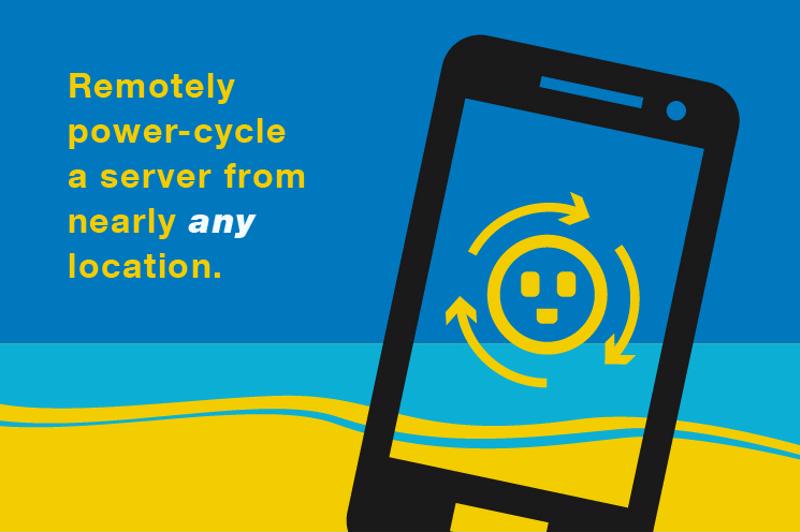5 bells and whistles of rack PDUs
5 bells and whistles of rack PDUs

Did you know that the earliest U.S. patent for a power strip dates back to 1929, and it was called a "Table Tap"? If only Carl Petersen, history's all-but-forgotten recipient of patent US1889695A, could see his beloved Table Tap now.
Today's power strips are dynamic devices that can distribute immense power loads and calculate electrical throughput with uncanny accuracy. In the data center, these power distribution units (PDUs) are crucial to the continuous, controlled flow of electricity to mission-critical equipment. This includes the servers that are responsible for supporting invaluable business applications.
Viewed in this light, PDUs are the unsung heroes of the digital age, and we're just skimming the surface. Modern rack PDUs do a lot more than just distribute power loads among servers. In fact, they're transforming data center power management. Here's how:
1. Real-time power monitoring
"Plan for growth, predict power load and accommodate IT flexibility."
Back in the old days of "sneaker reports," data center managers had to manually walk the floor to take power readings to be used for client billing purposes. But today's internet-connected PDUs can gather real-time metrics including current, volts, real power, apparent power, power factor and kilowatt hours.
In addition to improving billing accuracy by collecting a significantly larger sample size, capturing this data lets managers monitor power-distribution and electrical-capacity conditions in real time. All of this information can be monitored on a web-based dashboard miles away from the facility. Alerts can also be implemented to notify pre-designated staff the second power thresholds are exceeded. In the long term, this constant aggregation of power metrics also enables smarter power capacity planning decisions, making it easier to plan for growth, predict power load and accommodate compute flexibility.
2. Outlet-level switching
Switched PDUs take data center power monitoring to the next level. Not only can data center managers see exactly how much power is flowing through a single outlet, but they can also remotely deactivate and reactivate that outlet. With little more than a mobile device and the proper authentication, staff can power cycle a server in a Dallas facility from a vacation house in Key West.
It's one thing to be able to know exactly what's happening in your data center down the outlet. It's another to be able to take action based on that data. With switched PDUs, no aspect of your data center's power infrastructure is too granular for control.

3. Environmental intelligence
PDUs' intelligence-gathering capabilities no longer stop at power. By taking a modular approach to the development of power strips, PDU manufacturers have made it possible to swap out intelligence units, allowing for PDU-level monitoring of environmental conditions including:
- Temperature.
- Airflow.
- Humidity.
- Dew Point.
This modular build also means that new functionalities can be added and removed to certain PDU models to enhance current capabilities, as opposed to replacing the entire unit. In other words, the modular rack PDU evolves with your data center.
4. Network redundancy
"Bi-directional connectivity to switches means that PDU intelligence never fails."
Naturally, as more equipment is added to data centers, more PDUs will be needed. Specifically, two PDUs will be required for each rack to support A and B power feeds. These feeds will split the total load for that rack 50/50, so that should one feed fail, the other will not exceed its maximum capacity. Simple enough.
However, the introduction of internet connectivity to PDUs adds a layer of complexity. Now, every single PDU needs to be wired back to the network switch. Not only that, but it also needs to maintain redundancy in the event that the primary path to the switch becomes disrupted.
In recent years, PDUs have evolved to accommodate these issues in two key ways:
- Daisy-chaining: To limit Ethernet cabling requirements, individual PDUs can be connected to one another in a series that is then wired back to a switch as one PDU.
- Rapid Spanning Tree Protocol (RSTP): With RSTP, a series of PDUs can have two connections back to the switch, one at the beginning and one at the end, without the threat of loops.
Through these innovations, a chain of PDUs 60 strong can maintain network redundancy with only two hard-wired connections to a network switch. This ensures that remote monitoring and switching capabilities will continue to function for the entire series of connected PDUs. If a link is broken, traffic simply reroutes in the other direction.
That's what we like to call resilient intelligence.
5. VLC capabilities
In rare instances, data center managers may be required to airgap all PDUs in the data center for security or compliance purposes. This means that all of the aforementioned capabilities that arise from internet-connected power strips – monitoring, switching, automatic alerts, etc. – are off the table. The result is a bit of a riddle: How do you make a basic PDU smarter if you're unable to connect it to the internet?
Enter visible light communication (VLC). Using a secured smartphone, an authorized technician can simply scan the local display on the basic PDU, which projects a series of seemingly random codes. A mobile application on the device then interprets those codes into a comprehensive snapshot of that PDU. Everything from apparent power to kilowatt hours is instantaneously captured on the secure mobile device. This lets data center staff capture information about power utilization with ease and, if necessary, export the reports for their records – no internet connectivity required.
If nothing else on this list has made old Carl Petersen proud of the power strip, we hope VLC does.



